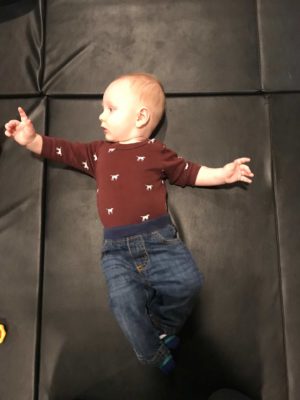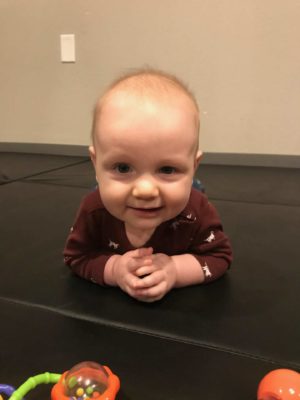Why do some infants need PT and how do I know if my child is one of them?
By: Laura Kendall, DPT
How do you know your child is meeting motor development skills on time? How do you know if your infant needs Physical Therapy (PT)? Difficulties in infancy can be tricky to identify! Many parents are overwhelmed by the other life changes that come with having an infant and identifying missed milestones can be hard to do. This blog article aims to help by sharing common reasons physical therapy is beneficial in infancy and help parents determine if their child is missing milestones.
The term “developmental delay” covers a multitude of “not yet mastered” skills in children of all ages. In infancy, early gross motor milestones include rolling, crawling, and walking skills. When children do not develop these skills on time, physical therapy helps develop those skills so kids can continue to explore their environment. Physical therapy works through play by practicing these difficult skills in a fun an innovative way. PT helps children strengthen muscles that may have remained weak and to learn new movement patterns necessary to meet motor milestones. When looking at typical child development, children should be able to roll over by 5 months, independently sit by 6 months, crawl by 8 months, stand at 11 months, and walk at 12 months. Delays in one or more of these areas can interrupt a child’s development in the areas of strength, coordination, and balance causing difficulties in all areas of mobility.
Difficult labor and delivery can also cause infants to require the services of a Physical Therapist. During a difficult vaginal delivery, an infant’s neck can get stretched during the process. This causes damage to a large bundle of nerves that travel into the shoulder causing weakness of the infant’s arm. In more severe cases, the infant may receive a fracture to the collarbone. This type of injury is called a brachial plexus injury. This injury becomes obvious when the infant is not using one arm. In these cases, a physical therapist will work with parents and the infant to promote strength and use of the injured arm by providing exercises for parents to complete at home.
While neglecting to use one arm is a more obvious symptom of torticollis, there are more subtle symptoms that can indicate a problem. If an infant looks predominantly in one direction, a tight neck muscle could be the culprit. When this happens, the baby will demonstrate a preference with the direction they look and/or rotate towards that side while also holding their head in a tilted position. Physical therapy works on stretching, massage, and positioning techniques to help them improve muscle mobility and allow them to look both directions. When these techniques are not implemented, changes to the child’s head shape will become apparent (plagiocephaly). PTs identify and track progress by measuring a child’s head and watch for changes in head shape. These measurements are used to determine positioning strategies that improve the symmetry of the head in order to prevent long term effects. When plagiocephaly is severe enough children may be required to wear orthotic helmets.
Here are some commonly used techniques that can be used to help promote physical development:
Working on improving neck range of motion by tracking toys, lights, or sounds

Tummy Time

Football hold working on strengthening neck muscles

